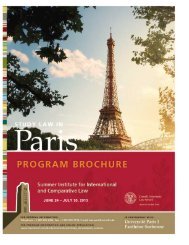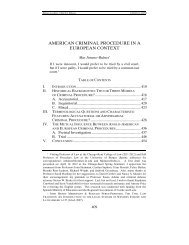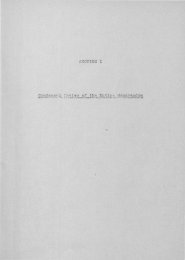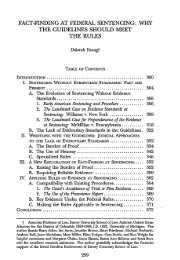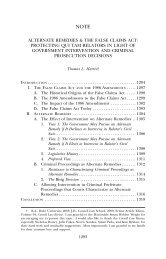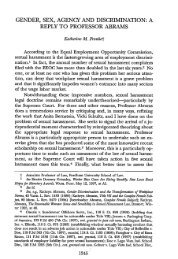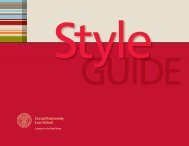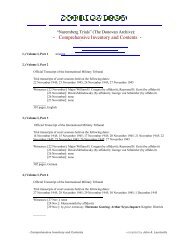JUDICIAL CLERKSHIP HANDBOOK - Cornell University Law School
JUDICIAL CLERKSHIP HANDBOOK - Cornell University Law School
JUDICIAL CLERKSHIP HANDBOOK - Cornell University Law School
Create successful ePaper yourself
Turn your PDF publications into a flip-book with our unique Google optimized e-Paper software.
Staying current<br />
Application materials may be sent in the fall, but<br />
some Justices will not review them for months.<br />
Applicants should send update letters whenever<br />
they obtain new information, particularly:<br />
Contact information. Students typically list<br />
their law school address and telephone number<br />
on their résumés, which makes it imperative<br />
that they send a letter or updated résumé<br />
indicating where they can be reached<br />
immediately during the summer. Contact<br />
information for recommenders may change as<br />
well, and applicants should submit an updated<br />
list promptly.<br />
Grades. Send a new transcript when additional<br />
grades are posted.<br />
Additional publications or honors. A<br />
publication, an academic award, or a<br />
promotion at work, for example, would all<br />
warrant an updated résumé.<br />
In a perfect world, perhaps, candidates could<br />
submit one application package to each Justice<br />
and update it infinitely, but the Justices generally<br />
discard application materials when they finish<br />
hiring for a given Term. October remains a useful<br />
benchmark after the submission as well; those<br />
who apply and are not selected by the following<br />
October should seriously consider sending out<br />
new packages. Applicants can minimize the in-<br />
convenience to their recommenders by letting<br />
them know well in advance that they may apply<br />
again and asking them to retain the computer file<br />
of their recommendation letters.<br />
Supreme Court clerk lists<br />
For serious researchers or the simply curious, the<br />
Supreme Court’s Public Information Office publishes<br />
two lists of clerks for each Term. The first,<br />
available in July, lists only the names of all law<br />
clerks for each Justice. The second, available in<br />
October, includes the law school and lower court<br />
judge for each law clerk. There is no charge for<br />
either list; call (202) 479-3211 to request a copy.<br />
The Supreme Court Library also maintains a<br />
clerk database; the early data is a little spotty, but<br />
the information on law schools and lower court<br />
judges for each law clerk is pretty comprehensive<br />
after about 1940. Call (202) 479-3000 and<br />
ask for the Library to get more information. <br />
Marilyn Drees is Director, Judicial Clerkships &<br />
Fellowships, for the Yale <strong>Law</strong> <strong>School</strong> Career<br />
Development Office and is a member of the NALP<br />
Judicial Clerkship Task Force.<br />
Forms of Address for Members of the United States Supreme Court<br />
The Chief Justice<br />
Address: Hon. William H. Rehnquist<br />
The Chief Justice of the United States<br />
Supreme Court of the United States<br />
One First Street, NE<br />
Washington, DC 20543<br />
Salutation: Dear Mr. Chief Justice:<br />
Associate Justices<br />
Address: Hon. Sandra Day O’Connor<br />
Associate Justice<br />
Supreme Court of the United States<br />
One First Street, NE<br />
Washington, DC 20543<br />
Salutation: Dear Justice O’Connor:<br />
Reprinted from NALP Bulletin, October 2002.<br />
© NALP 2002. All rights reserved. This article may be printed for personal use only. Any reproduction, retransmission or<br />
republication of all or part of this material is expressly prohibited unless NALP or the copyright owner has granted prior<br />
written consent. For reprint permission contact the NALP office at (202) 835-1001 or www.nalp.org.<br />
3



